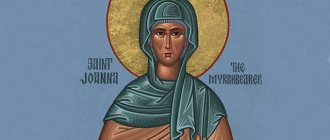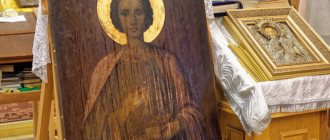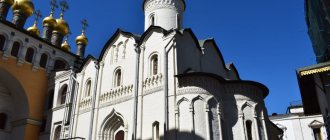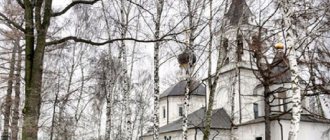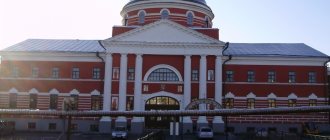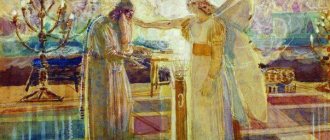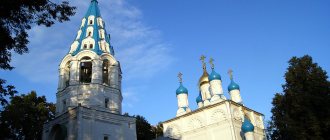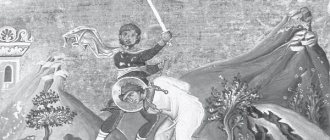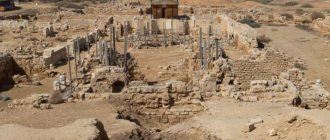Mir
Ukraine Ternopil region Pochaev The Holy Foot of the Virgin Mary Loading the map...
{"format":"leaflet","minzoom":false,"maxzoom":false,"limit":50,"offset":0,"link":"all","sort":[""], "order":[],"headers":"show","mainlabel":"","intro":"","outro":"","searchlabel":"\u2026 \u0441\u043b\u0435\ u0434\u0443\u044e\u0449\u0438\u0435 \u0440\u0435\u0437\u0443\u043b\u044c\u0442\u0430\u0442\u044b","default":"","import-annotation":false,"width ":"auto","height":"350px","centre":{"text":"","title":"""link":"""lat":50.00540399999999863211996853351593017578125,"lon": 25.50855200000000166937752510420978069305419921875,"icon":""},"title":"","label":"","icon":"","lines":[],"polygons":[],"circles":[ ],"rectangles":[],"copycoords":false,"static":false,"zoom":8,"defzoom":14,"layers":["OpenStreetMap"],"image layers":[] ,"overlays":[],"resizable":false,"fullscreen":true,"scrollwheelzoom":true,"cluster":false,"clustermaxzoom":9,"clusterzoomonclick":true,"clustermaxradius":80, "clusterspiderfy":true,"geojson":"","clicktarget":"","showtitle":true,"hidenamespace":false,"template":"","userparam":"","activeicon": "","pagelabel":false,"ajaxcoordproperty":"","ajaxquery":"","locations":[{"text":"\u003Cb\u003E\u003Ca href=\"/palomnik/%D0% A1%D0%B2%D1%8F%D1%82%D0%BE-%D0%A3%D1%81%D0%BF%D0%B5%D0%BD%D1%81%D0%BA%D0%B0 %D1%8F_%D0%9F%D0%BE%D1%87%D0%B0%D0%B5%D0%B2%D1%81%D0%BA%D0%B0%D1%8F_%D0%9B%D0 %B0%D0%B2%D1%80%D0%B0\" title=\"\u0421\u0432\u044f\u0442\u043e-\u0423\u0441\u043f\u0435\u043d\u0441\u043a\u0430\u044f\ u041f\u043e\u0447\u0430\u0435\u0432\u0441\u043a\u0430\u044f \u041b\u0430\u0432\u0440\u0430\u003E\u0421\u0432\u044f\u0442\u 043e-\u0423\u0441\u043f \u0435\u043d\u0441\u043a\u0430\u044f \u041f\u043e\u0447\u0430\u0435\u0432\u0441\u043a\u0430\u044f \u041b\u0430\u0432\u0440\ u0430\u003C/a\u003E\u003C /b\u003E\u003Chr /\u003E\u003Ca href=\"/palomnik/%D0%A1%D0%B2%D0%BE%D0%B9%D1%81%D1%82%D0%B2%D0%BE :%D0%90%D0%BD%D0%BD%D0%BE%D1%82%D0%B0%D1%86%D0%B8%D1%8F\» title=\»\u0421\u0432\u043e\ u0439\u0441\u0442\u0432\u043e:\u0410\u043d\u043d\u043e\u0442\u0430\u0446\u0438\u044f\»\u003E\u0410\u043d\u043d\u043e\u0442\u 0430\u0446\u0438\u044f \u003C/a\u003E: \u041a\u0440\u0443\u043f\u043d\u0435\u0439\u0448\u0438\u0439 \u043f\u0440\u0430\u0432\u043e\u0441\u043b\u04 30\u0432\u043d\u044b\ u0439 \u0445\u0440\u0430\u043c\u043e\u0432\u044b\u0439 \u043a\u043e\u043c\u043f\u043b\u0435\u043a\u0441 \u0438 \u043c\u043e\ u043d\u0430\u0441\u0442\u044b\ u0440\u044c \u043d\u0430 \u0417\u0430\u043f\u0430\u0434\u043d\u043e\u0439 \u0423\u043a\u0440\u0430\u0438\u043d\u0435 \u0438 \u0432\u0442\u043e\u0440\u043e\ u0439 \u043f\u043e\u0441\u043b\u0435 \u041a\u0438\u0435\u0432\u043e-\u041f\u0435\u0447\u0435\u0440\u0441\u043a\u043e\u0439 \ u043b\u0430\u0432\u0440\u044b \u0432 \u0423\u043a\u0440\u0430\u0438\u043d\u0435. \u0412 \u043b\u0430\u0432\u0440\u0435 \u043f\u043e\u0434\u0432\u0438\u0437\u0430\u0435\u0442\u0441\u044f \u0431\u043e\u043b \u0435\u0435 300 \u0447\u0435\ u043b\u043e\u0432\u0435\u043a\u0431\u0440\u0430\u0442\u0438\u0438. \u041f\u0440\u0438 \u043e\u0431\u0438\u0442\u0435\u043b\u0438 \u0438\u043c\u0435\u0435\u0442\u0441\u044f \u0433\u043e\u0441 \u0442\u0438\u043d\u0438\u0446 \u0430 \u0434\u043b\u044f \u043f\u0430\u043b\u043e\u043c\u043d\u0438\u043a\u043e\u0432.","title":"\u0421\u0432\u044f\u0442\u043e -\u0423\ u0441\u043f\u0435\u043d\u0441\u043a\u0430\u044f \u041f\u043e\u0447\u0430\u0435\u0432\u0441\u043a\u0430\u044f \u041b\u0430\u0 432\u0440\u0430","link" :"","lat":50.00540399999999863211996853351593017578125,"lon":25.50855200000000166937752510420978069305419921875,"icon":""}],"imageLayers" :[]}
50.005404; 25.508552
Ukraine, Ternopil region, Kremenets district, Pochaev, Vossoedineniya street, 8
Pochaev, Ternopil region
Ukraine
The celibate foot of the Mother of God -
Footprint of the Virgin Mary with a healing spring (in the Assumption Cathedral)
Orthodox shrine located in the Assumption Cathedral of the Holy Dormition Pochaev Lavra. It is a stone with the imprint of the Foot of the Virgin Mary, emanating holy healing water.
About the name of the city and the foot of the Virgin Mary on the Pochaev Icon
There are two versions of the name of the monastery:
- The first monks fled from Kyiv, where their monastery was located near the Pochaina River. They named the monastery in honor of this tributary of the Dnieper.
- The second version is associated with the appearance of the Mother of God, which, according to some sources, occurred in mid-August 1250 (according to others - in 1240).
According to the second version, one of the monks, after prayer, climbed to the top of the mountain. There he saw in the fiery light the Virgin Mary with a crown on her head and a scepter in her hands. A shepherd, a certain Ivan Bosoy, also witnessed this phenomenon.
The Queen of Heaven disappeared no less suddenly than she had appeared. But after herself She left a trace of her right foot . Since then, holy water has been pouring from the stone. The same foot of the Mother of God today distinguishes all copies of the Pochaev Icon.
After a miraculous appearance at the foot of the rock, the monks built a small church of the Assumption of the Blessed Virgin Mary. Then, in 1649, when Job Pochaevsky , today a glorified saint, was the rector of the monastery, a temple was built over the foot of the Mother of God. Nowadays, the Assumption Cathedral is located on this site.
Until now, pilgrims come to Pochaev to pray in front of the shrines and draw water, which, through prayers to the Mother of God, cures ailments.
But let's return to the etymology of the name.
The news of the miraculous appearance of the Mother of God spread outside the monastery. People began to say: “The Virgin began to work miracles” (“The Virgin began to work miracles”). From the first words the name “Pochadiv” arose, and then without the letter “d” - “Pochaiv” (hereinafter referred to as “Pochaiv”). This is the second version of the name.
But be that as it may, the people were right. In what sense? The fact is that it was really at this place that the Virgin began to work miracles. And in 1597, a miraculous image appeared in the monastery, known today as the Pochaev Icon of the Mother of God.
Miracles[[edit]h2>
Since its appearance on Mount Pochaevskaya, the Cereal Foot has been a source of miracles. Many of them were included in the Chronicle and have survived to this day, but many, especially the most ancient ones, remained unknown to the world.
The oldest recorded healing occurred in 1664. Then the landowner Chojnacka’s servant was seriously ill, he almost lost his sight. However, through the prayers of the abbot of the Pochaev Monastery, having anointed his eyes with water from the Foot of the Most Holy Theotokos, the patient was healed.
There is also a known case of the miraculous healing of priest Grigory Beletsky in 1763. He suffered from a chest abscess, which disappeared soon after he was anointed with Holy Water. However, the disease returned in a more complex form: he developed a new abscess, internal. Halfway to the monastery he felt better and was able to enter the temple on his own. The sick man drank water from the Foot, and at home he washed his whole body with it. The pain decreased, the swelling subsided, and soon he was completely healed of the disease.
In 1780, a three-year-old baby died near Pochaev. After fervent prayer to the Most Holy Theotokos, his mother had a vision of an old man in a dream, who said to her: “Why are you crying and screaming? The medicine is in your house.” The woman gave her son the Holy Water from the Foot to drink and fell asleep again. The same old man appeared to her in a dream and told her about the healing of her son. When she woke up, she saw a boy sitting on the bed. The disease subsided, the child was miraculously healed.
History of the Pochaev Icon of the Virgin Mary
In 1559, the Greek Metropolitan Neophytos, who in the future was to become the Patriarch of Constantinople, passed through the territory of Volyn. Vladyka was just returning from Constantinople and on the way he dropped in to visit a certain landowner Anna Goyskaya , who lived on the Orlya estate, near Pochaev. The woman received the blessing of the Metropolitan and the image of the Mother of God as a gift.
More than once Anna Goyskaya saw the glow emanating from the icon, and when her brother was healed of blindness in 1597, the landowner realized: such a shrine cannot be kept at home. Therefore, Goyskaya decided to transfer the miraculous image to a nearby monastery. This is how the icon of the Mother of God received the name “Pochaevskaya”.
But the image did not stay in the monastery for long, just over 20 years. And then the holy face was stolen by the heir of Anna Goiskaya. Andrey Firley , that was the name of the kidnapper, made his way into the monastery, robbed it and took the icon with him. For about 20 years, the image of the Mother of God remained in his house. But, according to legend, Firlei’s act had its consequences: his wife became obsessed. The disease allegedly subsided only when, on the advice of Abbot Job of Pochaevsky, the icon was returned to the monastery. This happened in 1644.
And in 1675, the Virgin again showed a miracle.
How Elder Zosima pointed to the well of St. Job
If every pilgrim bows to the Mother of God and drinks from her Foot in strength, then not everyone can get to the well of St. Job, from which the healing water is taken. We can say we were lucky, or rather, providentially “lucky.”
While preparing a publication about the revelry of schismatics in the region, robbery attacks on Orthodox churches, we asked the abbot of the Pochaev Lavra to meet with the famous elder - the 86-year-old schema-monk Zosima (Rosolovsky), who was spiritually nourished at one time by the Pochaev elder Prokhor, who in turn was led by St. . Jonah of Kyiv. I would like to hear the advice of a long-term Lavra ascetic about the current times that the Church of Christ is going through in Ukraine and in the world in general. After talking and receiving comforting advice, we got ready to leave.
But Father Zosima called his cell attendant, novice Demetrius, who brought us to the elder’s cell and was present during our conversation.
“Give them holy water and prosphora,” the elder ordered. - And show the saint’s well.
A little later we understood why he gave such an order. Brother Dmitry, a 28-year-old novice from Belarus, carries out the obedience of the “well man.” That is, he is the keeper and responsible for maintaining the holy well of St. Job.
The Mother of God saves the monastery from the Turks
This happened after the Battle of Zbarazh. The Pochaev monastery was surrounded on three sides by the Turks. The monks understood that there was only hope for God's help and the protection of His Mother. All night the monks prayed on their knees in front of the Pochaev Icon.
And when in the morning they sang the kontakion “To the Chosen Voivode,” the Most Holy Theotokos again appeared in the sky, surrounded by angels. The Monk Job of Pochaev, who had already died for almost 25 years, prayed on his knees before Her.
All these events are described in the akathist before the Pochaevskaya icon.
According to legend, the Turks decided that there was a ghost in front of them and began to shoot at him. But all the arrows came back and wounded them. In fear, many fled and then died, but some after that believed and remained to serve in the monastery.
This happened on July 23, 1675, and according to the new style - on August 5. , the day of remembrance of the Pochaev Icon of the Mother of God was subsequently established .
“Uniate” period and the coronation of the image
The monastery did not always belong to the Orthodox Church. For 110 years, from 1721 to 1831, Greek Catholics served here. Why this happened and how “voluntary” the decision was is difficult to say for sure.
But nevertheless, the “Uniate” period also had a positive impact: new churches and printing houses were opened. Also, Greek Catholics influenced the modern appearance of the miraculous icon of the Mother of God - golden crowns appeared on the heads of the Virgin Mary and the Child. Why and when was this done?
In the Catholic Church there was a magnificent rite of coronation of the icon of the Virgin Mary - a crown was placed on the head of the Mother of God. This was a visible and solemn confirmation of the holiness of the image.
So in 1773, Greek Catholics “officially” declared the sanctity of the Pochaev Icon. The celebration lasted eight days, many believers and more than 1,000 Catholic priests gathered. According to one version, this event was supposed to increase the status of the Uniate Church. In Rome they even made 12 types of medallions depicting the Pochaev Icon of the Mother of God.
On the appointed day, amid cannon shots and all kinds of honors, royal crowns were placed on the heads of the Pochaev Mother of God and Savior.
For Orthodox Christians, this seems strange and unusual, because the holiness of a particular image is determined not by the crown and the pomp of decoration, but by prayer.
But pomp, in the understanding of Catholics, was one of the manifestations of their faith. Therefore, during the “Uniate” period, the monastery itself was actively upset, which was facilitated by Count Nikolai Pototsky, one of the initiators of the coronation of this miraculous icon of the Mother of God. It was through his efforts and funds that the monastery was reconstructed, the Assumption Cathedral and the fraternal building were erected.
Icon of Job of Pochaev
The monk at birth had the name Ioanna, with the surname Zhelezo. He was born around 1551 in Galicia, a region in what is now Ukraine. Already as a 10-year-old child, he came to the Ugornitsky Spaso-Preobrazhensky Monastery to become a novice. According to information from his life, Ivan, having barely learned to read, tried to master both the Gospel and the works of the Holy Fathers, especially falling in love with “The Ladder” - instructions for the strict spiritual life of the saint of ancient centuries, John the Climacus. His parents were small-scale nobles who led a righteous and pious life, and among their relatives there were persons of clergy. It is not surprising that he strove for a high and holy life, taking serious monastic works as a model from a young age.
At the age of 12, which is very early by monastic standards, the future saint took monastic vows with the name Job. Soon the entire monastery brethren and all the residents of the surrounding area fell in love with him for his gentle disposition, many deeds and desire to help all those in need. At the age of thirty - at that time the ancient rules regarding ordination to the priesthood were still observed precisely at this “adult” age - he was ordained a priest. According to legend, in the same year he was elevated to the great schema - the highest monastic rank, denoting the achievement of a certain degree of spiritual talent. By that time, the fame of the young ascetic had reached many areas; people specifically went to the Ugornitsky Monastery for advice. At that time the saint did not yet have the gift of working miracles, but by God’s grace he gave advice that helped people find the right path.
Perhaps fearing riots or popular unrest, or, on the contrary, wanting to get a famous priest, Prince Ostrovsky asked the ruling bishop of those places to transfer the saint to the Dubno Holy Cross Monastery nearby. Here the monk reigned for more than 20 years, resisting the ever-increasing persecution of the Orthodox Church by the Uniates.
Uniateism (from the Latin word “unio” - unification) is the union of several representatives of the Orthodox Church with Catholics. It represented an imaginary “unity of churches” with the preservation of the external aspect of Orthodox rituals (familiar to people), but with the acceptance of Catholic dogmas (the essence of the doctrine) and the primacy of the infallible Pope. It was created in 1596 and was imposed on the inhabitants of present-day Belarus and Ukraine from the West through political force, so it was not popular. The Russian Orthodox Church in its entirety never accepted the union, but Uniateism was politically beneficial, so the rulers of certain countries and regions forcibly took away churches from the Orthodox, giving the Uniates the opportunity to perform their services in them.
The righteous man resisted the Uniates in word and deed, not allowing them to take away the monastery’s churches. He created a number of theological appeals against Uniatism.
After several years of being an abbot, the saint began to feel burdened by his constant life in front of everyone. He wanted to devote more time to prayer work, communication with God, and self-knowledge.
Already in his old age, after 50, he went to the Holy Dormition Monastery on Pochaevskaya Mountain. Here he settled in a cave he dug on a mountain ledge, not far from the monastery. No one knew about his spiritual gifts, past fame and high position, but soon many monks began to come to him, receiving help and advice, and then he was again elected abbot - this time of the monastery, by the name of which he was glorified. Here he worked for more than half a century, allotted to him by the Lord.
He devoted all his time to building the monastery, helping and instructing the brethren; he worked and prayed almost without rest. Everyone was pleased with his virtues, calmness and meekness. So, one day the holy abbot checked the monastery household at night and found a thief carrying a bag of grain and supplies. The righteous man helped him lift the bag onto his back, only reminding him that his sinful deed would be remembered to him at the Judgment of God. The man was surprised by the saint’s behavior, experienced mental shock and sincerely repented of his attempted theft and other matters in his life.
The saint of God disciplined and streamlined monastic life with the help of the communal charter, which was then just beginning to take root in Rus'. With his hard work, which manifested itself in everything from planting trees and creating dams to surrounding the monastery with a fence and building seven monastery churches, he inspired both the brethren of the monastery and the laity of the area. For example, the names of the benefactors of the monastery of those times, who were obviously the spiritual children of the saint, are known: Fyodor and Eva Domashevsky.
With the help of ktitors, a printing house was also created, where spiritual books of that time and the works of the monk himself on Orthodoxy were printed. In 1628, the saint, as rector of the monastery, took part in the Kiev Council - a historical event where the Orthodox Church condemned Uniateism, not least thanks to the monk. Under the decree on the firm preservation of the Orthodox faith in Rus' after the meetings of the Kyiv Council, the saint’s handwritten signature was preserved: “John Iron, Abbot of Pochaev.”
The saint died as a centenarian on October 28, 1651, having predicted the day of his death and going to the Lord quietly and righteously, surrounded by the disciples he had blessed.
What preceded the coronation of the image?
Read also:
The Blessed Virgin or just a woman: Orthodox versus Protestants
It is worth mentioning one clearly positive consequence of this “official” glorification.
In order to recognize the Pochaev Icon as miraculous, it was necessary to collect numerous confirmations of holiness.
This is reminiscent of the modern canonization of saints. A special commission collects various certificates of assistance: one received healing from an illness, the second received support in a difficult situation, and so on. This data must be reliable and recorded in writing.
To crown the Pochaev Icon of the Mother of God, Lutsk Bishop Sylvester Rudnitsky examined all the known facts of miracles, collected stories about the appearance of the Mother of God and the amazing salvation from the Turks.
During the Greek Catholic period, all cases of help through prayers at the holy image were recorded. That is why it is known for sure that 539 miracles .
Thus, in the “Uniate” time, the history of the miraculous image and the monastery itself was described in detail.
What helps and what to pray for
In moments of loss of faith and complete hopelessness, many Christians ask for the protection of Our Savior and His Mother. The Pochaev Icon gives a person spiritual and physical insight. The Holy Face eliminates doubts, unkind thoughts and temptations on the path of life, strengthens faith in the powers of Heaven and resists devilish temptations.
The Pochaev shrine protects and preserves, and also cures the most severe and life-threatening ailments.
When reading prayer appeals before the Pochaev image of the Mother of God, you can ask for the following:
- about successfully overcoming chronic, severe and/or congenital forms of various pathologies;
- about good health for relatives;
- about establishing trusting relationships among loved ones;
- about preventing misfortunes and difficulties;
- about protecting the house from thieves, uninvited guests and people with sinful thoughts;
- about the safety of housing and acquired property;
- about salvation from heavy and sinful thoughts;
- about protecting the native land from enemy invasions.
The miraculous icon protects and protects from diseases
The monastery that never closed
In 1831, after the suppression of the Polish uprising, the monastery again became Orthodox and two years later received the status of a monastery. At that time, it was only the fourth monastery in the Russian Empire.
In the Assumption Cathedral, the Pochaev Icon of the Mother of God was placed above the royal doors. So that believers could venerate the shrine, it was lowered on special ribbons. This tradition has survived to this day.
No matter what disasters befell the monastery - fires, persecution by the Soviet authorities, the monastery managed to survive even in the 1950-1980s. It never closed. People believe that the Mother of God herself guards the monastery. This idea was also used for the design of the monastery website.
And you will learn about the amazing help with prayers in front of the Pochaev Icon of the Mother of God from this video:
